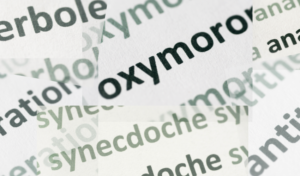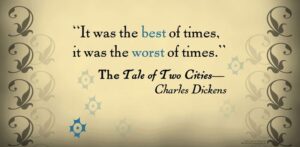10 Literary Devices That Writers Must Know About
WHAT ARE LITERARY DEVICES?
Literary devices take writing beyond its literal meaning. They help guide the reader in how to read the piece. Literary devices are techniques for extending the literal meaning of a piece of writing. They are methods for assisting the reader in learning how to read the piece in that meaning.
All literary techniques share the property of connection, which encourages the reader to view and understand the world in novel ways by forming or investigating relationships between things.

Literary Devices
Comparison is a literary element that is frequently used to create connections. The most obvious comparisons are those made through metaphors and similes. When two things are directly compared, such as “the tree is a giant,” a metaphor is used. An indirect comparison is called a simile, as in “the tree is like a giant.” In both cases, the tree is likened to and associated with something other than what it actually is (a tree), a gigantic. Different literary devices also create relationships.
Examples of how writing fully links to the realms of the senses include imagery and vivid description. Alliteration creates fresh literary connections by utilising the sounds of words themselves (“alligators and apples”). All of these literary devices have one thing in common: they establish fresh connections that go beyond the actual elements being described. They do this by adding rich levels of sound, sense, emotion, narrative, and, ultimately, meaning. They are what distinguishes literature from other genres and give it its special strength.
Continue reading for a detailed examination and critique of 10 popular literary devices.
There are many literary devices to discuss, and each one needs its own examples and explanation. As a result, for the sake of this article, we shall begin by concentrating on literary devices that are frequently used in both poetry and prose. We’ve provided literary samples of each device along with writing exercises you can apply to your own creative works.
1. METAPHOR
One of the most popular literary techniques is the use of metaphors, usually referred to as direct parallels. A metaphor is a remark that compares two items, frequently unrelated ones.
This tree is the forest’s god, to use a metaphor.
The tree is a tree, not a god, as is obvious. However, the reader is given the impression of something powerful, massive, and immovable by being told that the tree is the god. Additionally, referring to the tree as “god” rather than a word like “giant” or “gargantuan” makes the tree seem like the forest’s spiritual hub. The use of metaphors enables the writer to condense several details and images into a single brief statement. A direct description lacks the weight and value that the metaphor does. The reader won’t fully appreciate the significance of the tree’s size and scope if the author opted to refer to it as “the large, spiritual centre of the forest.”
2. SIMILE
Similes, usually referred to as indirect analogies, are constructed similarly to metaphors but convey a distinct message. Two unrelated objects are being compared to one another like metaphors. The analogy, as opposed to a metaphor, uses the words “like” or “as.” The deity of the forest is like this tree, to use a simile. OR: This tree serves as the forest’s deity.
WHAT IS THE DIFFERENCE BETWEEN A SIMILE AND A METAPHOR?
The obvious distinction between these two prominent literary devices is that a simile employs the comparison terms “like” or “as,” whereas a metaphor never does. Additionally, the use of “like” or “as” in the context of the aforementioned examples creates a certain amount of separation between the two components of the device. In a simile, the reader is made aware that, despite the tree’s size, it isn’t big enough to be a god; its “godhood” is merely a description and has no bearing on the poetry or story. Simply explained, metaphors work best when they serve as the poem’s or story’s main device and capture the essence of what you are attempting to communicate. Similes work best as a supplementary tool.
3. ANALOGY
An analogy is a comparison used to support an argument. It compares two unrelated objects. In particular, it contends that two items are equally important regardless of their emotional, intellectual, or literal significance. It is possible to classify analogical literary devices as a type of metaphor because they rely on comparison.
For instance: Making spaghetti is as simple as 1, 2, 3.
According to this comparison, preparing spaghetti and counting onwards are both simple tasks. A typical analogy structure is “A is as B” or “A is to B”.
“A is to B as C is to D” is another typical literary strategy for using analogies. For instance: As Meryl Streep is to acting, Gordon Ramsay is to cooking.
The aforementioned wording functions well in argumentative writing. Essayists and lawyers both frequently draw comparisons. Analogies are less common in other types of creative writing, although they can still be effective literary strategies.
You may even be familiar with this one: “By any other name would smell as sweet what we call a rose.” Shakespeare’s Romeo and Juliet
4. IMAGERY
Imagery is what it sounds like—the use of figurative language to describe something. In fact, the previous literary methods have already seen imagery in action: by referring to the tree as a “god,” the reader is given the impression that it is strong and big. The best authors employ imagery to appeal to all five senses; it is not limited to visual descriptions. Your writing will make readers feel as though they are living and breathing in a lively world by appealing to their sense of sight, hearing, touch, taste, and smell. The best authors appeal to all five senses with imagery.
Sight imagery: The tree spread its gigantic, sun-flecked shoulders.
Sound imagery: The forest was hushed, resounding with echoes of the tree’s stoic silence.
Touch imagery: The tree felt smooth as sandstone.
Taste imagery: The tree’s leaves tasted bitter, like unroasted coffee beans.
Smell imagery: As we approached the tree, the air around it smelled crisp and precise.
Organic imagery and kinesthetic imagery are two more, less well-known categories of visualisation. When we talk about organic imagery, we’re talking about depictions of bodily events and internal experiences. Think of the feelings one could have while racing against the wind when you think about kinesthetic imagery, which is imagery of motion and movement.
5. SYMBOLISM
Many of the concepts given in metaphor and imagery are combined in symbolism. A symbol is essentially the use of an object to represent a notion; it’s similar to a metaphor but shorter. The English language is filled with symbols, and we frequently utilise these well-known literary methods in speech and design without even realising it. A few very commonly used symbols include:
- “Peace” represented by a white dove
- “Love” represented by a red rose
- “Conformity” represented by sheep
- “Idea” represented by a light bulb switching on
6. PERSONIFICATION
Giving nonhuman objects human characteristics is exactly what it sounds like and is known as personification. Personification, also referred to as anthropomorphism, is a potent technique for encouraging empathy in your readers. Consider personification as a particular kind of imagery. A nonhuman thing can be described using the five senses and by giving it human descriptions. Even nonhuman or non-living objects can have thoughts, emotions, and mental events ascribed to them.
7. HYPERBOLE
Any kind of exaggerated description or claim is referred to as hyperbole. The English language frequently employs hyperbole, and you’ve probably heard someone say things like:
- I’ve been waiting a billion years for this
- I’m so hungry I could eat a horse
- I feel like a million bucks
- You are the king of the kitchen
No one can eat an entire horse in one sitting, and none of these examples should be taken literally. There are also no kings in the kitchen. Using this classic literary technique, we can contrast our feelings with something severe to convey to the reader how strongly we are feeling something at the time.
8. IRONY
Irony occurs when a writer uses a language opposed to that which is being described. For instance, in real life, if someone is having a difficult day, they can claim to be doing “great,” despite the fact that they are actually doing rather poorly. Or the narrator of a narrative might say:
“She felt an unending love for her job, as do the majority of bureaucrats, and she was anxious to spread this positive emotion to others.”
Irony, in other terms, draws attention to the discrepancy between “what seems to be” and “what is.” Irony in literature can refer to both dialogue and ironic events, which are those that develop in egregiously unexpected ways relative to expectations.
9. JUXTAPOSITION
Juxtaposition is the juxtaposition of opposing concepts, frequently to create a humorous or thought-provoking impact. Contrast is a frequent literary element used by authors in both poetry and prose, though it takes on slightly different forms in each genre.
Poetry often uses juxtaposition to heighten tension or draw attention to a key contrast. Take the poem “A Juxtaposition” by Kenneth Burke, which contrasts loudness and silence, treble and bass, and nation and individual. The end result is a little poem that criticises the contradiction of a citizen imprisoned within their own country.
Juxtaposition accomplishes something similar in prose. A famous example comes from the opening A Tale of Two Cities by Charles Dickens:
“It was the best of times, it was the worst of time.”

A Tale of Two Cities
Dickens opens his novel by situating his characters into a world of contrasts, which is apt for the extreme wealth disparities pre-French Revolution.
10. PARADOX
A juxtaposition of opposing ideas that, though it may seem impossible, actually reveals a deeper reality is referred to as a paradox. Paradoxes, one of the tougher literary devices, are effective for dismantling dichotomies and testing the reader’s assumptions.
We can learn a straightforward paradox from ancient Rome.
(Latin translation) Catullus 85
I hate and I love. Why I do this, perhaps you ask. I know not, but I feel it happening and I am tortured.
It’s common to think of “hate” and “love” as being diametrically opposed. How is it that the speaker can have both love and hate for the subject of his affection? The poem doesn’t address this, instead stating that the speaker is “tortured,” yet it is a potent paradox that two opposing binary forces coexist in the speaker. Given that both seem torture the speaker equally, Catullus 85 challenges the reader to question the absoluteness of emotions like hate and love.
Another paradox example comes from Oscar Wilde’s The Importance of Being Earnest.


Leave a Reply